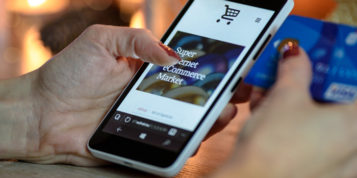Whether it’s a binge-worthy Netflix series or an amazing podcast, more people are consuming greater amounts of content today than at any other point in human history. And with the rise of digital technologies, most people are aware that the way content is created and shared has evolved — but few recognise that people’s attention spans have undergone a similar evolution.
According to new research, nearly half of the UK’s workforce today are more selective when it comes to the content they consume, more than they were a year ago. This poses a challenge for content creators that need to remain competitive in the ever-growing battle for their audience’s attention. To break through consumers’ filters of unwanted content, brands must think carefully about what they can do to make messages stick and, ultimately, create meaningful engagement with their audiences.
Cutting through the noise
More than a quarter of respondents reported splitting their attention between two pieces of content, resulting in them having to watch, listen or read a piece again. That means that the need to understand how to engage audiences is greater than ever. Even at work, attempting to multitask in meetings is causing people to disengage – almost one-third of your team is likely losing track of what’s being discussed, leading to a major uptick in unnecessary mistakes. To break through the noise and distractions, brands and content creators must look at this from the perspective of the people they’re expecting to listen.
Instead of putting out yet another piece of content that only gets a fraction of people’s focus, creators need to consider the three key areas that will help them stand out: visuals, story, and conversation.
Where and how to use visuals
Sometimes showing beats telling. Throughout the entirety of human history, people have communicated both verbally and visually. The need for this combination of elements is no less important today. Nearly three-quarters of presenters recommend the use of dynamic and animated visuals as a means to increase engagement. On top of this, data storytelling using well-made charts, infographics, and diagrams is a fantastic way to make raw numbers more palatable, and keep them from overwhelming your audience.
Why narrative matters
Like visuals, stories are intrinsic to human culture and literally always have been. From early mythology to the Netflix Originals that seem to come out every week, storytelling is the one element that truly separates us as a species and defines what it is to be human, That legacy persists, and today, more than 8 in 10 people in the UK say a strong narrative is absolutely essential to maintaining audience engagement.
The best way to use a narrative to drive audience engagement is through a concept called conversational storytelling, which is based on a flexible approach to presenting that drives more interaction, engagement, and emotional investment from an audience. If done in a presentation, for example, this might mean beginning by asking the audience what they would like to hear about, and then determining the rest of the presentation path based on that starting point. If the presenter is well-versed in their content, crafting a unique story that takes the audience from that starting point to the key message is a relatively simple process. Modern presentation software give presenters the flexibility to adjust freely to the flow of the conversation and break away from the outdated linear approach to creation and delivery.
Conversational presenting should mostly be used in a face-to-face setting, either in-person or virtually during remote presentations. However, while conversations are primarily associated with in-person meetings, digital channels are becoming an increasingly flexible and popular way for people to communicate. Even immersive technologies are slowly making their way into presentations.
Today we live in an age where every click, mouse-hover, or millisecond-long interaction is recorded as “engagement.” That might suit some, but it doesn’t do justice to how attention spans are truly evolving – and the real engagement that can be harnessed from them. By encouraging interactivity, using animated visuals, and employing conversational storytelling, brands can avoid being left behind and instead, capitalise on this change. Doing so will have a huge impact, from increased brand loyalty and trust to amplified engagement — and will result in far greater business growth and opportunities for companies that are willing to take the plunge





